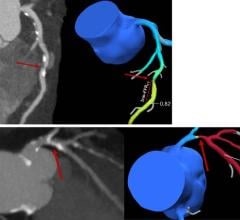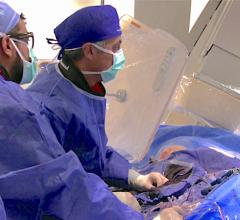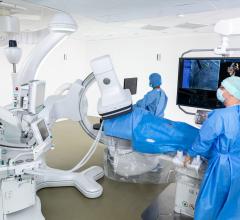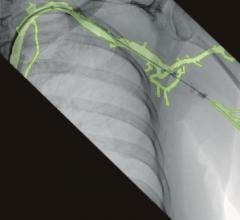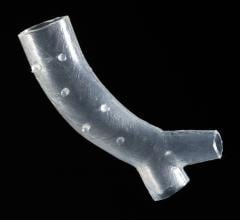
Bill Crounse, M.D., Director of Worldwide Health at Microsoft Corporation, speaks with Imaging Technology News (ITN) on how Radiology is moving the whole industry toward digitization.
ITN: How is Radiology playing an important role helping to integrate the enterprise the electronic health record?
Dr. Crounse: The whole digitization of Radiology is moving the whole industry along in terms of where we need to be. Most of our facilities are going filmless with PACS and digital radiology, but the spectrum for the future is much bigger than that because traditional imaging, CT, MRI and imaging modalities are just the beginning of what will be an imaging digital revolution in healthcare.
Motion Computing's C5 Mobile Clinical Assistant is a camera built into that device along with the capability to do audio and video recording. We really need to rethink the meaning of the electronic record. We have been trying to take paper record and digitize it. Really, the tools and technology that we have today enable something much richer than that. Instead of simply taking the written word and trying to digitize it, we can bring rich media into play to document the medical record. If I'm looking at a rash or wound or if I am doing a surgery, we will move beyond the point where the surgeon does the report at the end of the surgery and one day simply digitizing the entire medical procedure and making that a part of the medical record. Rich digital media will become embedded in the medical record.
Digital images as part of the record and digital audio a range of other digitized media are becoming a part of the record. And Radiology is leading the way.
Also, where physicians are describing patient encounters in writing, it is a lot easier to take a digital photo or videotape of the encounter. A picture can say a thousand words.
As data input is still an issue for doctors today, I believe that lot of traditional ways of documenting patient care will persist but in a digital platform. With Windows Vista and Office, SharePoint technologies and SharePath, the ability to create electronic forms and build into those workflows the opportunity to use a stylus and digital ink and doing dictation. The whole data entry thing, we have really reached the tipping point of offering an array of data entry options.
ITN: How does the integration of PACS and the EHR improve patient safety and lower healthcare cost?
Dr. Crounse: I would put a greater emphasis on improving patient safety, patient quality and medical error reduction. If you look at the amount of data in the medical record today and as we enter into proteomics and personalized medicine like the human genome, the amount of data on any individual is terabytes and terabytes and the amount of information is beyond the paper record�s capabilities. The power of the technology is to bring to the clinicians attention that which is relevant and important and provide a high degree of graphical user interface. But a lot of that pure grunt work of maintaining and analyzing and storing the data is taken care of by technology.
ITN: What are the biggest obstacles to adopting these technologies in healthcare?
Dr. Crounse: I think it is no longer about the technology as it is about policy procedure, standards, interoperability and behaviors. I think we have the tech today. Today we have cracked the code on mobility, broadband ubiquitous wireless, tablet PC, broadband computing power.
We have issues around interoperability and I elude the fact we are behind the rest of the world. Why is it that in the cellular tech the U.S. is the last to get the most advanced devices? Long ago we adopted different standards in cellular industry and invested heavily in land-lined technology.
In American healthcare, we are burdened by a legacy investments in old IT that are holding us down. Today we have this issue about not having interoperable records. Keep in mind that 80 percent of American healthcare is on paper. The good news is that we are seeing the tipping point in technology and we are seeing the federal mandates around price and quality transparency, interoperability and lower cost, and that is where information technology can take us.
I think you are going to see interoperability again as a huge topic this year at HIMSS in New Orleans next week.
ITN: What are the key factors pushing healthcare to fully embrace IT technology?
Dr. Crounse: There will be three. I honestly believe that within a five-year timeframe it will not be possible to practice medicine in the United States of America and get paid for it unless you are electronic.
The other forcing function is going to be on the private insurance side of things. Large employers are in step with government around demanding price and quality transparency and you can�t get there unless you have data and you can�t get the data unless it is electronic.
Third I would say a shift in clinical leadership. Today, if you don�t have IT in the hospital, none of the physicians coming out of training and even some clinicians in the first-third of their career are laying down the gauntlet and demanding these tools.
ITN: What are some of the strategic moves Microsoft has made to invest in healthcare?
Dr. Crounse: Microsoft is seriously investing in healthcare through its U.S., North American-based group, The Microsoft Healthcare and Life Sciences, and a Worldwide Public Sector Healthcare Group, which manages public healthcare around the rest of the world. Recently, Microsoft launched the newest healthcare division, the Health Solutions Group.
That has signaled Microsoft�s really deep investment in this industry because we now for the first time have a group that actually is making acquisitions and building our own healthcare solutions. [Microsoft recently acquired by Azyxxi, a health care software company that has developed a solution to tracks patients records in real time.]
ITN: What kinds of solutions is Microsoft building for healthcare?
Dr. Crounse: The Health Solutions Group is very focused on the entire ecosystem of healthcare, from the consumer/patient through the clinician, to the payers of healthcare and employers in health plans and even life sciences. So they are building solutions to enhance interoperability, knowledge-driven health and the consumer side of that, alluding to the way consumers get healthcare information and all of the transactions that take place in the healthcare system. Moving into the provision of health information and services, using telemedicine, audio/video, messaging, e-mail in the home and home visits.
The AZYXXI allows end-users to not only get at the information across the enterprise but also perform a number of analytical processes, what I like to call �patient intelligence.� The systems, designed for and by physicians, grew out of Medstar Health in WA State, and Microsoft is offering it to customers that want to breakdown information silos. The AZYXXI solutions will be displayed in four different pods at HIMSS.
HealthBlog
Read more comments from Dr. Bill Crounse, M.D., Director of Worldwide Health at Microsoft Corporation, on how technology can improve healthcare delivery and services around the world on HealthBlog at http://blogs.msdn.com/healthblog/.


 May 17, 2024
May 17, 2024 
